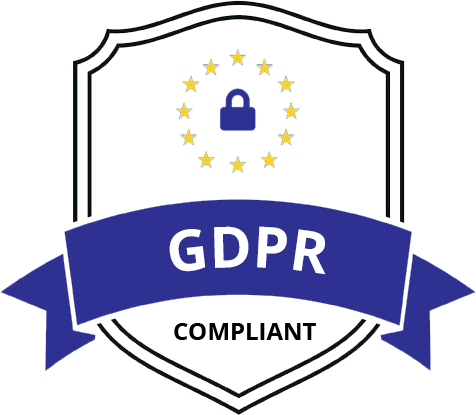Three demand generation focus areas you need to know

The rise of digital transformation has brought a radical shift in buying behaviour and the marketing landscape. With an explosion in the number of touchpoints buyers need to go through before they trust a brand, coupled with higher expectations of response times and a growing emphasis on omnichannel engagement, marketers must now ensure they provide an exceptional brand experience.
The advent of marketing automation and demand generation has helped bridge this gap, helping marketers understand the buyer journey in-depth, engage proactively with buyers, and nurture them through the buying cycle.
Digital, omnichannel and multi-touchpoint engagement has redefined the role of marketers. They no longer just "generate/attract" leads and passively hand them over to sales — instead, they need to actively engage and guide buyers through their journey.
The customer journey and sales funnel as we know them aren't any more linear. Instead, we're looking at a non-linear cycle of customer engagement. There is hardly a defined path or set of specific stages, and in many cases, buyers have a rather fluid journey with myriad touchpoints.
Understanding customer intent and engaging them throughout their journey will be critical for the success of B2B demand generation.
Emerging areas of focus
Covid-19 has driven the adoption of AI at an unprecedented rate, giving marketers access to a vast pool of data and insights. The use of machine learning algorithms allows them to process big data in real-time and understand consumer behavior better than ever before.
Cognitive technology helps marketers process unstructured data, find patterns to gain deeper insights, and infer hidden meanings. It's already being used in martech to match the right message to the right audience at the right time. However, it gives marketers a huge advantage in learning from data and prospects' interactions to bring the best possible content to each customer.
Customer Data Platforms (CDP) and AI-powered marketing automation will continue to play a significant role in enabling marketers to work more strategically and proactively. CDPs, for example, can collect data from across the organisation and centralise it into one customer profile that's shared with all the teams/functions involved in the customer journey. This gives marketers a 360-degree view of the buyers' behavior, increasing the value of every touchpoint with customers.
The shift to a new business paradigm is forcing marketers to look at traditional fields from a different perspective and bring in a whole new set of technologies to boost their efforts. Let's take a look at three crucial demand generation focus areas for B2B marketers in 2022 and beyond.
1. Content marketing
According to HubSpot, in 2020 content marketing emerged as the top priority for 70% of B2B marketers. Similarly, a study by the Content Marketing Institute reveals that 69% of highly successful marketers have document content strategies, as opposed to only 16% of their least successful counterparts.
Yet, there's still a considerable gap between what marketers know they need to do and what they actually do with content.
Let's take a deeper dive into the insights that big data analytics platforms offer B2B Marketers and help deal with the new marketing landscape.
Content consumption insights
These insights help marketers understand what content customers engage with, where they click and how long they spend on the pages. It also enables them to identify invisible patterns in user engagement data that can influence strategy and marketing decisions.
Knowing whether a lead is exploring product information or has moved onto service-based content helps you structure your messaging appropriately. Here are six types of content consumption insights that big data analytics platforms offer:
- Content consumption heatmaps. See how customers engage with your content and where they click (or don't). This helps you identify the best locations for placing your CTAs, or features like social proof, trust symbols, etc. You can also see whether a lead is exploring product information or has moved onto service-based content.
- Campaign tracking. A/B testing and campaign tracking help marketers optimize their content marketing strategy by identifying the most effective content for their target audience. This allows you to bring in more personalisation into your messaging and generate higher engagement levels.
- Lead engagement over time. It's easier to engage with leads at various stages of the buying process if you have a 360-degree view of your customers. CDPs help marketers understand how prospects move through their customer journey and what needs they fulfill at different phases of the funnel, enabling them to create custom content for each buyer persona.
- Campaign tagging. It's the practice of adding metadata to actions that have been performed on behalf of or by a user. It allows marketers to track how certain marketing efforts contribute to lead generation, customer acquisition, pipeline velocity and forecasting.
- Assisted conversions. As customers navigate through content pages before converting, marketers need to understand which types of content are helping their prospects move down the funnel. This allows marketers to choose topics, create custom content accordingly and optimize their entire marketing plan.
- Content performance analysis. CDPs allow marketers to track which pages receive the most traffic, views, downloads and social shares, enabling them to reallocate content budget according to highest- performing assets.
In layman’s terms, here are some basic questions that content consumption insights can help answer:
- Who is consuming content (demographics)?
- What content type (or topics or categories) do they prefer and consume (interests)?
- What percentage of consumers engaged with a specific content type?
- What devices do they use to consume content (digital behavior)?
- Which content is consumed and to what percentage?
- How do they consume content at various stages in their purchase process?
- What content do they finally engage with to make a purchase decision?
Content gap insights
As content marketers continue to produce more and more content, CDPs help them analyse how well they're covering the market. For example, through content gap insight, you can see which topics are covered by your team vs. competitor blogs or industry influencers. This information helps you align your strategy with customer needs, set appropriate content and production goals, and ensure you don't miss out on any related topics.
Content gap insights can help you with:
- Analysing search keywords and search behavior to identify high demand content.
- Finding out which customers are leaving the platform unsatisfied and identifying the bounce behavior.
- Identifying redundant, low-value, and low-performing content.
- Analysing the tone and frequency of competitor content to identify gaps.
2. Personalised and contextualised experiences
Salesforce's State of Customer Experience report suggests that personalisation is a crucial differentiator for businesses and that it's critical to win new customers and increase retention by making their journey more tailored and seamless.
In fact, 82% of business buyers want to experience the same buying process they do when purchasing for themselves. Yet, surprisingly, only 27% of business buyers say companies currently excel in this.
That's why it's so important to have a 360-degree view of your customers, including their buying stage, behaviors, preferences, interests, and pain points. Once you have this information, you can create custom campaigns that speak to different customer personas.
This, in turn, improves the chances of converting leads and helps avoid alienating potential consumers. A CDP enables marketers to understand their customers' needs better, build custom content accordingly and analyse how satisfied their customers are with the content. And it allows them to:
- Personalise websites and find what resonates best with visitors.
- Create relevant content that builds trust and engagement throughout the buying journey.
- Optimise campaigns to get better results, reduce costs & close more deals faster.
- Achieve greater visibility among target markets while driving better engagement.
Personalised experiences will continue to drive business buying decisions, thanks to the insights that CDPs provide marketers with. This will only get more important in 2022 and beyond as organisations invest in new technologies (like AI) for personalised customer service at scale.
It’s important to note that personalisation, customisation, and contextualisation mean different things.
- Personalisation is the process of making one-to-one marketing relevant to individuals and offering them specific experiences with your content, products, and services.
- Customisation allows customers to choose or tailor a product or service that meets their specific requirements and needs.
- Contextualisation is about uniting valuable customer insights with relevant ideas and opportunities to guide people toward making better decisions.
3. Intent marketing
Gartner predicts that by 2022, 70% of all B2B marketers will be utilising intent data for prospecting. And with 87% of buyers preferring to self-serve their buying journey (TrustRadius), it is imperative that you take intent data seriously.
Intent data is not news to marketers. But the shift from first-party to third-party intent is changing the way marketers think about campaigns.
The days when companies could track their success based on click-throughs and website visits are over. While these metrics still play a crucial role, advertisers need to focus on more advanced KPIs that impact conversions..
Augmenting customer data with customer intent data plays a significant role in this. It not only makes your campaigns efficient but also lets you understand your target markets better.
Intent data can help B2B marketers to:
- Identify new opportunities to create relevant content, campaigns, and offers.
- Personalise customer journeys across all channels.
- Build stronger relationships with your customers using data-driven insights.
- Respond with relevant messaging, experiences and offers that drive engagement.
- Turn anonymous browsers into loyal customers by personalising all communications.
- Optimise campaigns to drive better results and close more deals faster.
- Achieve greater visibility with target markets while driving engagement.
Intent data goes a long way in helping you understand buyer behavior better. It gives B2B marketers a comprehensive view of their target market, allowing them to create more relevant campaigns that speak to the customers' needs.
With this data at hand, you can predict when your contact is most likely to become a customer and create an experience accordingly. As a result, intent data has the power to transform your marketing and CRM strategy for the better.
Conclusion
Digital transformation has had an enormous impact on the way customers buy, which is especially evident in the B2B landscape.
The buying process is no longer linear, and buyers often go through several touchpoints before purchasing. Therefore, to succeed in B2B demand generation, marketers need to understand customer intent and engage them throughout their journey.
It's imperative now to leverage marketing automation and AI to process big data and understand buyer behavior better. Machine learning algorithms will give marketers a huge advantage in understanding each customer, delivering the right content at the right time, and maximizing their efforts throughout the buying cycle.
And content marketing, personalised experiences, and intent data have emerged as crucial areas of focus that B2B marketers cannot ignore.





